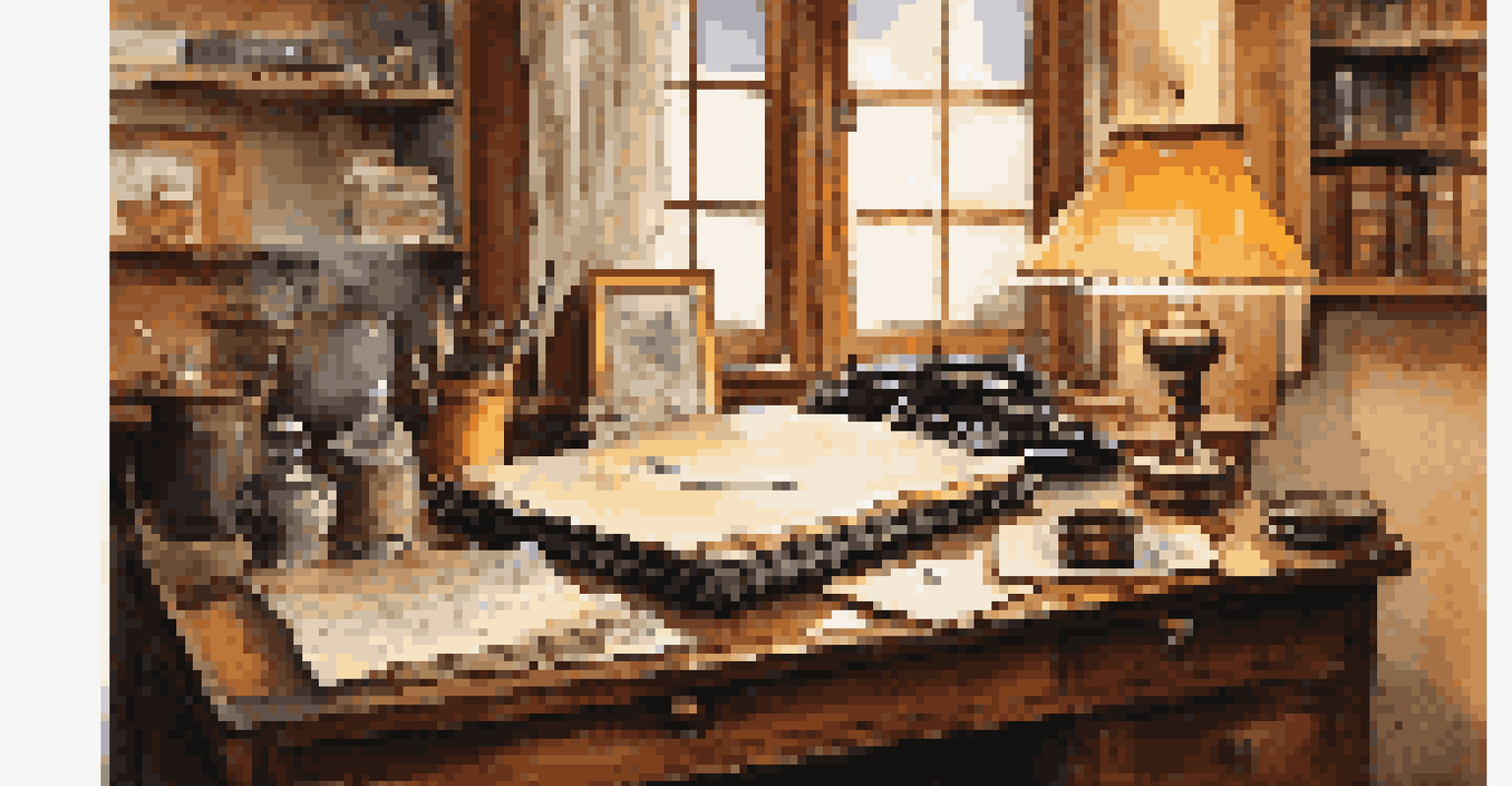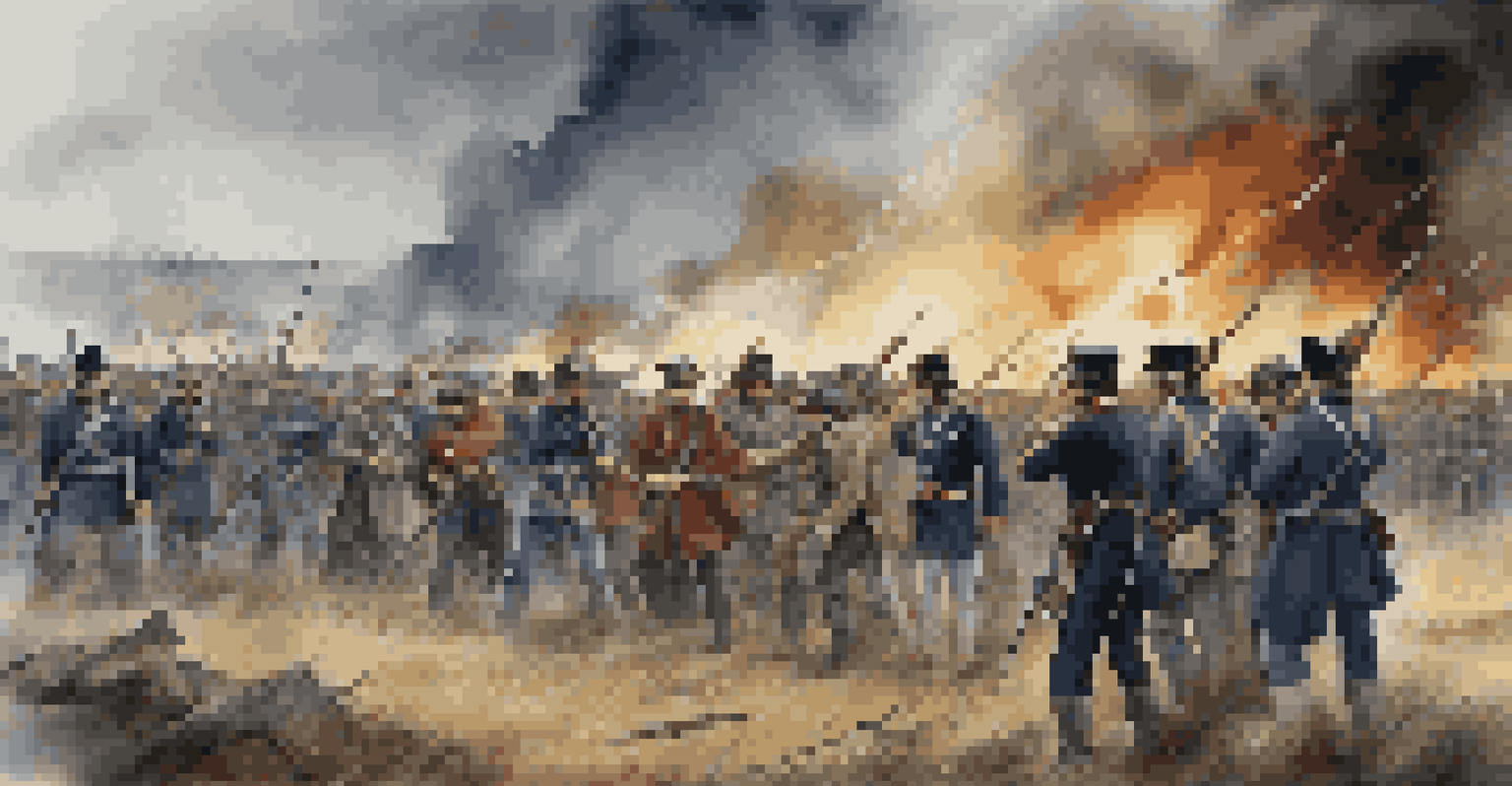Exploring Historical Fiction: Research and Creativity

Understanding Historical Fiction and Its Appeal
Historical fiction captivates readers by weaving real historical events with imaginative storytelling. It allows authors to explore different time periods, cultures, and perspectives, making history come alive in a way that traditional textbooks often cannot. This genre not only entertains but also educates, sparking curiosity about the past.
Historical fiction is a way to remember the past and a way to explore the human condition in all its complexity.
Readers are drawn to the rich tapestry of characters and settings that historical fiction provides. The ability to immerse oneself in a different era, experiencing the challenges and triumphs of those who lived then, creates a connection that modern stories sometimes lack. This allure is a significant reason why historical fiction remains a popular genre in literature.
Moreover, historical fiction often reflects contemporary issues through the lens of the past. By examining historical contexts, authors can comment on present-day societal challenges, making their stories both relevant and thought-provoking. This blending of time periods ultimately enriches the reading experience.
The Importance of Research in Historical Fiction
Research forms the backbone of any compelling historical fiction. Authors must delve into the details of the time period they are writing about to ensure authenticity. This includes understanding the social norms, language, clothing, and significant events that shaped the lives of their characters.

Beyond just facts, research aids in creating a believable world that readers can trust. For instance, if an author sets a story during the American Civil War, they must understand the political climate, the struggles of that time, and the emotions involved. This depth of knowledge allows for a richer narrative and more relatable characters.
Historical Fiction Blends Fact and Imagination
This genre captivates readers by merging authentic historical events with creative storytelling, making the past engaging and relatable.
Additionally, thorough research can lead to unexpected discoveries that enhance the story. An obscure historical fact might inspire a plot twist or a character's background, making the narrative more intricate and engaging. In this way, research not only supports the story but can also spark creativity.
Balancing Facts with Fiction: A Delicate Dance
Finding the right balance between historical accuracy and creative storytelling is essential in historical fiction. While authors should strive for authenticity, they also need to allow their imaginations to run wild. This interplay between fact and fiction is what makes the genre so compelling.
The past is never dead. It's not even past.
Sometimes, authors may need to take creative liberties to enhance the narrative or character development. For instance, a fictional character might be placed in a real historical event to explore personal experiences. This approach can create a captivating story while still being rooted in actual history.
However, it's crucial for authors to avoid altering the core facts that define historical events. Readers appreciate when the integrity of history is maintained, even if the characters are fictional. Striking this balance keeps the narrative engaging and respects the real events that shaped our world.
Incorporating Real Historical Figures into Fiction
Using real historical figures in fiction can add depth and intrigue to a narrative. When authors incorporate these individuals, they can highlight their contributions and complexities, giving readers a more nuanced understanding of history. This practice invites readers to learn more about the figures that shaped our past.
However, portraying real people requires a careful approach. Authors need to research thoroughly to depict these figures authentically while also considering their motivations and personalities. Balancing factual representation with imaginative storytelling can lead to a compelling narrative that captivates audiences.
Research is Key for Authenticity
Thorough research is essential for authors to create believable worlds and characters that resonate with readers, ensuring a rich narrative.
Additionally, fictionalizing historical figures can spark conversations about their impact and legacy. By weaving these characters into fictional plots, authors can explore themes of morality, ambition, and human nature, making the historical context relatable to contemporary readers.
Creating Authentic Characters in Historical Contexts
Developing authentic characters is essential in historical fiction, as they serve as the reader's guide through the past. Authors must consider how the social, political, and cultural contexts of the time influence their characters' thoughts and actions. This attention to detail helps create relatable and believable personas.
Writers often use diverse character perspectives to enrich their narratives. By showcasing different social classes, genders, and backgrounds, they can provide a multi-faceted view of history. These varied experiences allow readers to connect with the story on different levels, fostering empathy and understanding.
Moreover, authentic characters can challenge or reinforce historical narratives. Through their journeys, they can highlight societal issues or personal struggles that resonate with contemporary audiences, making the historical context feel relevant. This connection is key to engaging readers and sparking their interest in history.
The Role of Imagination in Historical Storytelling
Imagination plays a crucial role in historical fiction, allowing authors to fill in the gaps left by history. While research provides a solid foundation, creativity brings the past to life, transforming facts into compelling narratives. This imaginative aspect is what sets historical fiction apart from traditional historical accounts.
Authors can envision the emotions, thoughts, and motivations of their characters, creating scenarios that may not have been documented. For instance, a character's internal conflict during a significant historical event can be a powerful way to explore the human experience. This blend of imagination and history adds layers to the storytelling.
Characters Drive Historical Connection
Developing authentic characters allows readers to connect deeply with historical contexts, fostering empathy and a better understanding of the past.
Furthermore, imagination allows authors to explore 'what if' scenarios, envisioning alternative outcomes or hidden stories. These creative explorations can lead to captivating plots that keep readers engaged while encouraging them to think critically about history. Ultimately, imagination enriches the reading experience and fosters a deeper appreciation for the past.
The Impact of Historical Fiction on Modern Readers
Historical fiction has a profound impact on modern readers, fostering a deeper understanding of history. Through engaging narratives, readers can explore different cultures, time periods, and perspectives that they may not encounter in their everyday lives. This genre serves as a bridge between the past and present, making history accessible and relatable.
Moreover, historical fiction can inspire readers to delve further into historical research. After finishing a captivating novel, readers often seek out the real events and figures that inspired the story. This curiosity can lead to a newfound interest in history, encouraging lifelong learning and exploration.

Additionally, the themes explored in historical fiction resonate with contemporary societal issues, making them relevant to today's readers. By examining past events and their implications, historical fiction prompts discussions about identity, morality, and social justice, ultimately enriching our understanding of both history and ourselves.